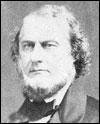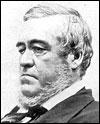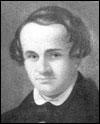By Robert L. Hewitt, M.D. ('59)


 Medical study at Tulane, always preeminent among the colleges and schools, precedes the establishment of the university by some 50 years. Three men, each only 26 years of age, founded the Medical College of Louisiana in 1834: Thomas Hunt of Charleston, South Carolina; Warren Stone of Vermont and John Harrison of Washington, D.C.
Medical study at Tulane, always preeminent among the colleges and schools, precedes the establishment of the university by some 50 years. Three men, each only 26 years of age, founded the Medical College of Louisiana in 1834: Thomas Hunt of Charleston, South Carolina; Warren Stone of Vermont and John Harrison of Washington, D.C.
In 1834, New Orleans had a population of 58,000 despite floods, hurricanes, malaria, smallpox, yellow fever and cholera. A new, 540-bed Charity Hospital had been erected in 1832 on Common Street, now Tulane Avenue, on the precise site of the present structure. This building was the fifth Charity Hospital, which dated to 1736.
On September 28, 1834, the New Orleans Bee announced the opening of the medical college and published its prospectus, which listed among its objectives “to lead the advancement of science and the rational treatment of disease.” The seven founding physicians were all age 26 or younger, and Hunt was elected dean. The first commencement was April 5, 1836, and the address was delivered in Latin to eleven graduates.
The faculty provided free medical care at Charity Hospital, and, in return, the professors could teach students in the hospital. In 1843, the state legislature granted a lease of property to the medical school, which moved in to a substantial and handsome structure at the corner of Common and University Place. The new facilities, the growing recognition of almost unparalleled opportunities afforded by Charity Hospital and the high reputation of the faculty all contributed to sharp increases in enrollment. The chief disadvantage was the widely publicized pestilential fevers associated with New Orleans.
In 1845, the legislature authorized creation of a university which, through an 1847 act, incorporated the medical college as the Medical Department of the University of Louisiana. The act also provided for a new building which included a wing to house the Medical Department while the earlier building housed the new Law Department. The medical complex was recognized as one of the largest and best arranged medical schools in the country. Under Hunt’s excellent leadership—and with a strong faculty, an excellent physical plant and the outstanding advantages of Charity Hospital—the Medical Department developed rapidly. By 1860, enrollment rose to over 400, placing it fourth nationally. In addition, the emergence of sectionalism resulted in a greater number of students remaining in the South to study medicine. Said Hunt, “We proudly claim for Louisiana the distinction of having established and endowed a college whose practical advantages are superior to any southern, western, or northern universities of monarchial Europe.
The school closed on November 2, 1863, for the remainder of the war years. The faculty and student body scattered, most serving in the Confederate Army or supporting its cause. By March, 1862, there had been 1,084 graduates. A later analysis of 427 of those graduates disclosed that approximately 12 percent of them died of wounds, illness or imprisonment, or were totally disabled in the war. In November of 1865, the Medical Department and the University of Louisiana reopened, thanks largely to Hunt, president of the university; T.G. Richardson, dean of the Medical Department; and Christian Roselius, dean of the Law Department. Succeeding Hunt upon his death in 1867 was his brother, Randall Hunt. The following two decades were the most difficult in the institution’s history, yet few schools in the country, and no other in the South or the West, could provide the clinical opportunities found in New Orleans.
In 1877, Richardson led a move to increase degree requirements to three years of study and to lengthen the school year. The medical school faculty also authoritatively championed public health measures and led Louisiana to be the first state to establish a board of health. By 1881, Paul Tulane, a wealthy philanthropist living in Princeton, New Jersey who had made his fortune in New Orleans, made his bequest. As a result, the Board of Administrators of the Tulane Educational Fund was organized and took control of the University of Louisiana; on June 4, 1884, Legislative Act No. 42 created the Tulane University of Louisiana.
Succeeding Richardson as dean in 1885, alumnus Dr. Stanford E. Chaille’ (1853) was the right man at the right time. Under Chaille’, Tulane became the leading school in the old Southwest and one of the nation’s best. At the turn of the century, Chaille’ was a leader in increasing the length of study to four years at Tulane and throughout the South; and despite the heavier requirements, enrollment rose to more than 400 by 1891. Chaille’ also further strengthened Tulane’s leadership in public health.
In 1893, Richardson died, and his wife, Ida Richardson, made a memorial gift to the school of nearly $150,000, which included a completely new building to house the entire Medical Department and new equipment. The building located on Canal Street, bounded by Iberville, Villere and Robertson Streets, was two blocks from Charity Hospital. The site was twice the size of the original medical campus. The three-story building included an amphitheater with a capacity for 525.
Dr. Rudolph Matas (1880) stands as Tulane’s most distinguished alumnus, for the medical school and for the university. Matas is universally recognized as the “Father of Modern Vascular Surgery.” In the twilight of his long and illustrious career, Matas said of the Tulane Medical Department: “I have a feeling of affection and reverence for it, almost like that of a son for his mother, for it was the mother that opened the door of everything for me in medicine.”
With an outstanding faculty and the unrivaled facilities of Charity Hospital, the Tulane Medical Department entered the 20th century as the ranking medical school in the South and one of the best in the nation. In the Flexner Report, a survey of American and Canadian medical schools published in 1910 and sponsored by the Carnegie Foundation for the Advancement of Teaching, Tulane ranked among the nation's top eight. Flexner identified Tulane’s major weakness as lack of endowment.
In 1902, Alexander C. Hutchinson, an influential transportation executive and patient of Matas left his estate of approximately $750,000 to the Medical Department. His will expressed the hope to erect a university hospital. Thus, Matas was probably among the first to recognize the necessity of a hospital controlled by the university. The Hutchinson bequest was, in any case, insufficient to create a university hospital, but the gift did provide for establishment and maintenance of a free outpatient clinic—still operating today—and construction of a new Richardson Memorial building on the uptown campus as a basic science facility. The old Richardson Building on Canal Street was renamed the Hutchinson Memorial Building.
Isadore Dyer assumed the deanship in 1908, and under Dyer, admission standards rose to include two years of college, and the medical faculty greatly increased in number, to 80. In 1909, Dyer initiated the Ivy Day tradition, when a sprig of ivy was transplanted from the old Richardson Memorial Building downtown to the new Richardson Memorial Building uptown.
The 1920s also saw a national movement toward full-time clinical teachers, led by Johns Hopkins, with generous support from the Rockefeller General Education Fund. Rockefeller also encouraged Tulane to adopt full-time appointments with a grant to the Department of Medicine. As a result in 1924, Dr. John Herr Musser from the University of Pennsylvania was chosen to head the Department of Medicine on a full-time basis. With a second Rockefeller grant the following year, another full-time appointment was made, Dr. E.W. Alton Ochsner as chairman of the Department of Surgery. By the 1920s it had become apparent that the old Hutchinson Building at Canal Street was both overcrowded and antiquated. Dean Bass introduced a proposal to erect on the uptown campus a hospital and school building to be located between Willow and Claiborne, but it was dismissed as impractical. Instead, a Rockefeller grant of $1.25 million funded a new Hutchinson Building in 1930 on the present Tulane Avenue site. The Hutchinson Fund, designated years before for a hospital, remained intact.
Tulane’s direction and aspirations during the 1940s were best summarized in the 1945 Ivy Day address by Dr. Charles E. Dunlap, a graduate of Harvard Medical School and professor and chairman of the Department of Pathology: “…A great university in the South is the insistent need in American Scholarship today…I see no reason under heaven why Tulane should not become that University! It is no longer a question of whether a great university will be built in the South; it is only a question of who will build it…” Substantial funds for research became available during the 1950s, beginning a golden age for medical research, and these funds were important in the rapid progress of the medical school. In 1955, the Libby Building addition to the Hutchinson Building increased the floor space of the school by 50 percent. A large grant from the Ford Foundation in 1957 prompted the Burthe-Cottam addition, which doubled floor space and included the parking garage. A successful drive for $16 million to finance these projects and to increase endowment was initiated in 1959. In that year, Dean Maxwell Lapham reported, Tulane medical alumni were second only to Harvard in support of their school.
In 1959, an outside consultant concluded that Tulane should aim to be “among the best and leading medical schools in the country” and identified, once again, as the major problems, finances and difficulties with Charity Hospital. In 1962, Tulane received from the National Institutes of Health the Delta Regional Primate Research Center, a 500-acre site near Covington. In 1963, the university acquired from the Department of Health, Education and Welfare 509 acres near Belle Chasse, later named the F. Edward Hebert Research Center and Laboratories. The Department of Tropical Medicine and Public Health, which had expanded rapidly after 1950, achieved status as a separate school in 1967.
Tulane University Hospital and Clinic was dedicated September 23, 1976 and initially included the Jane and Jack Aron Pavilion. The Reily Foundation Pavillion was added in 1991. The Tidewater Building, given to Tulane in 1994, is the home of the School of Public Health and Tropical Medicine. The J. Bennett Johnston Health and Environmental Research Building was opened in April, 1994. Also contiguous to the Tulane Hospital is the Tulane ambulatory cancer center and parking garage.
The history of medicine at Tulane represents an evolution in excellence, marked by austerity but enriched by romanticism and tradition. During the formative years, survival through pestilence and war engendered a strength and resiliency of character that remains as a vital part of the thriving institution today. Dr. Charles E. Dunlap said, in an Ivy Day address in 1945: “A continuing and practical interest in the future of the school by you and all graduates of Tulane is the very brick and mortar which can build this into The Great University of the South.” It would seem that Dr. Dunlap knew whereof he spoke.
This history is an abbreviated excerpt from an article in the Spring 1994 issue of Tulane Medicine, itself adapted from Hewitt’s illustrated lecture, presented to the Alumni Study Club during Homecoming 1991.
